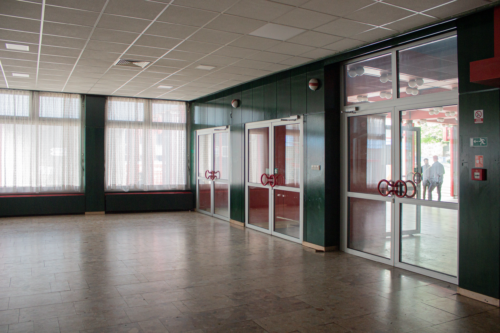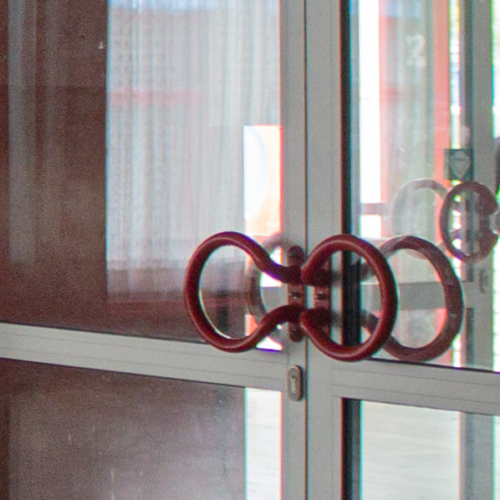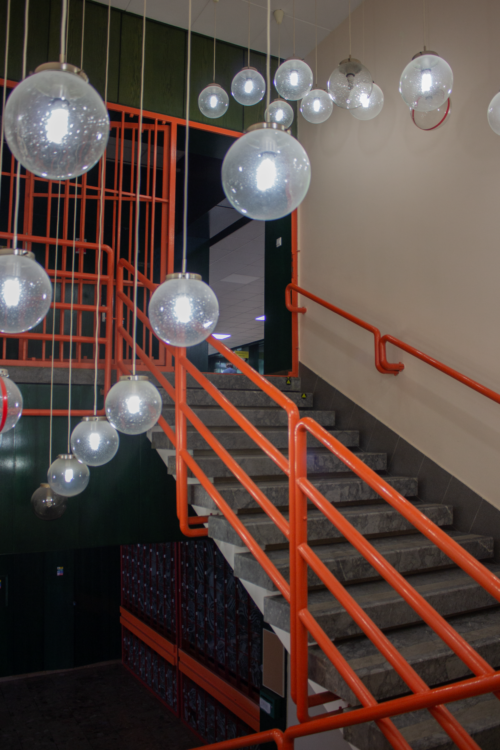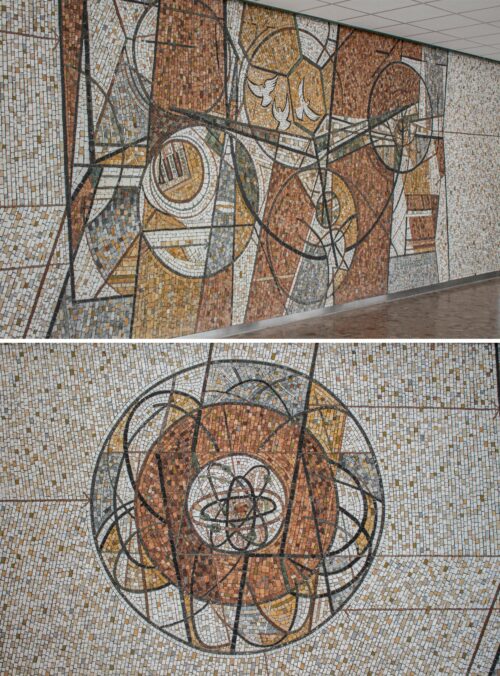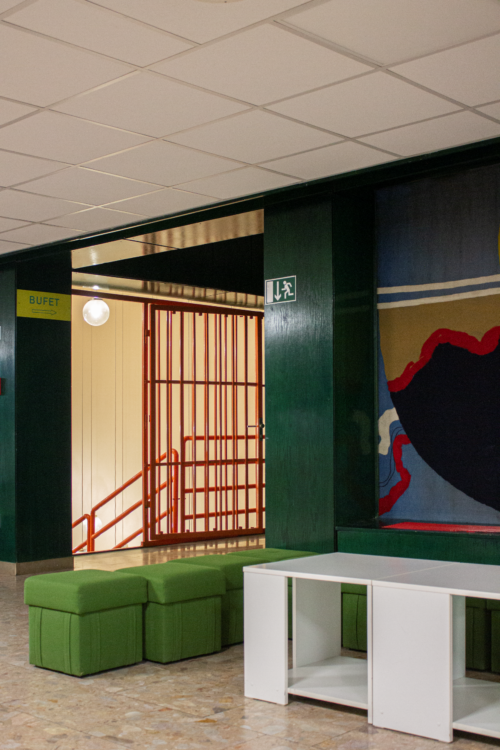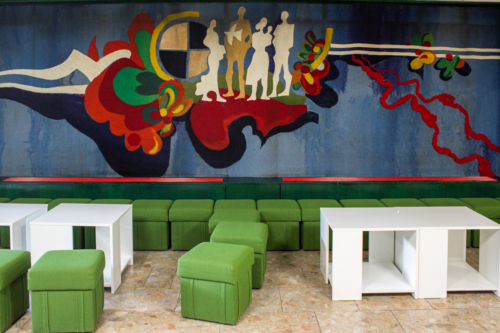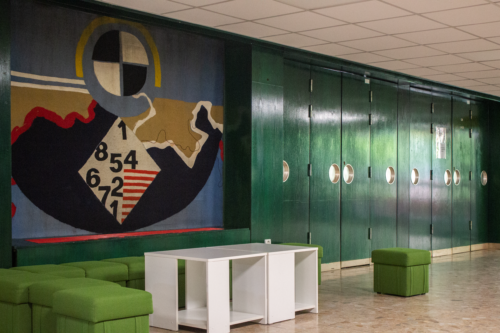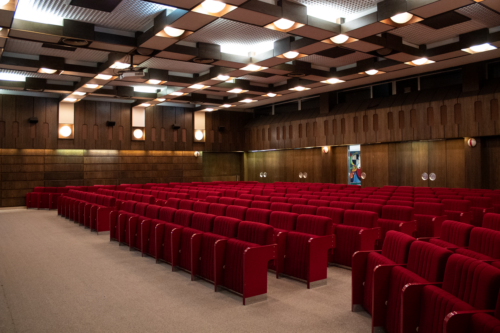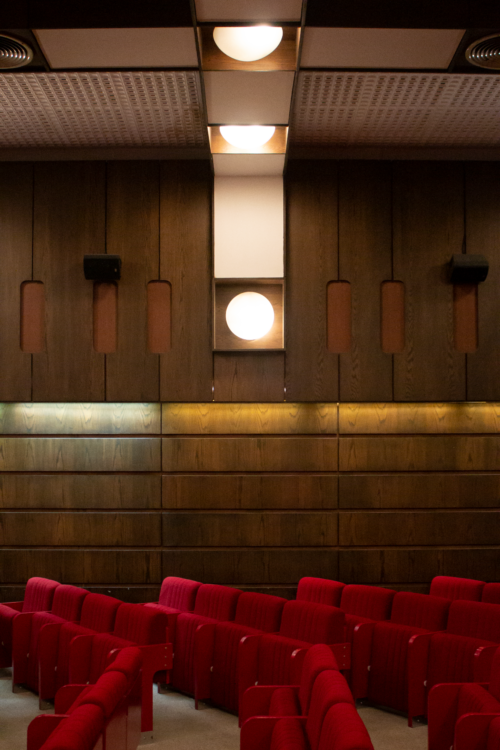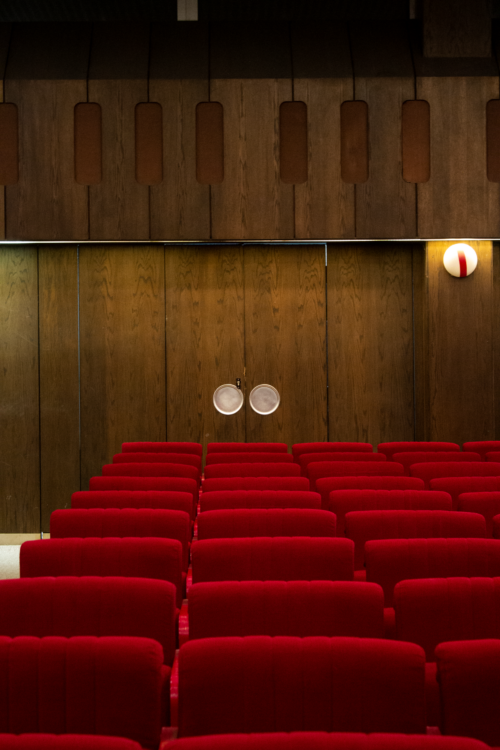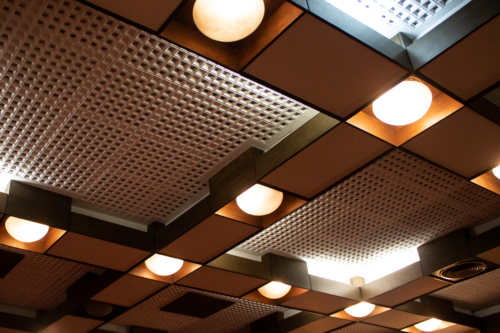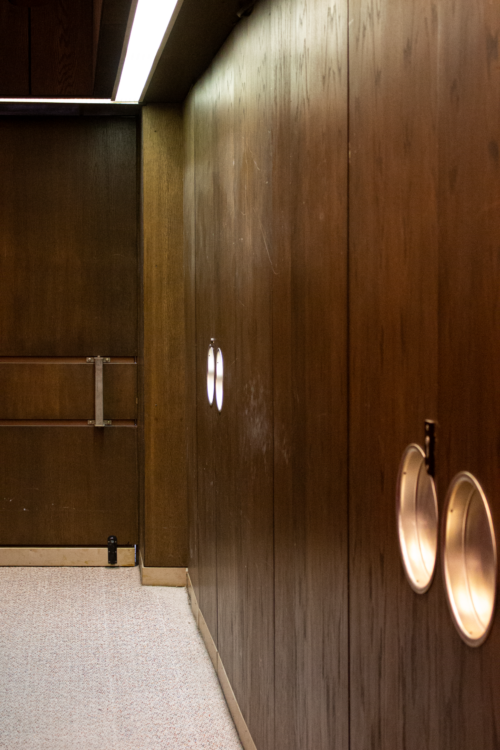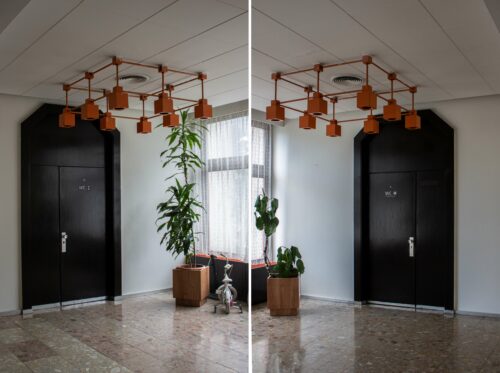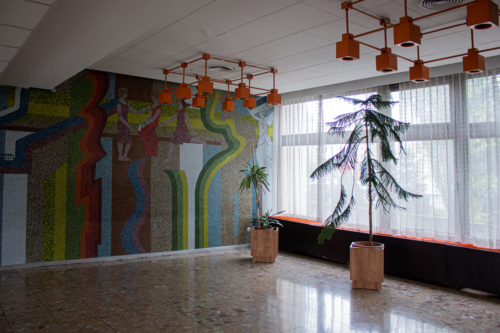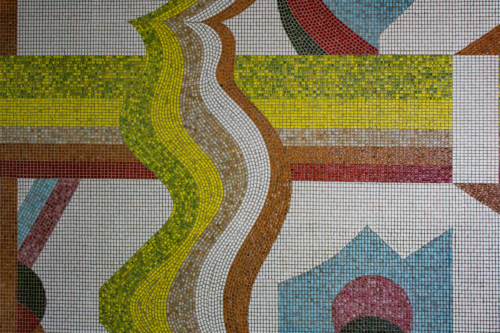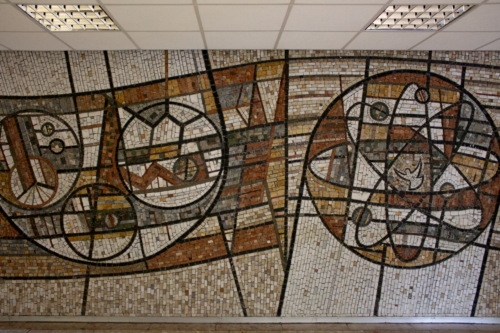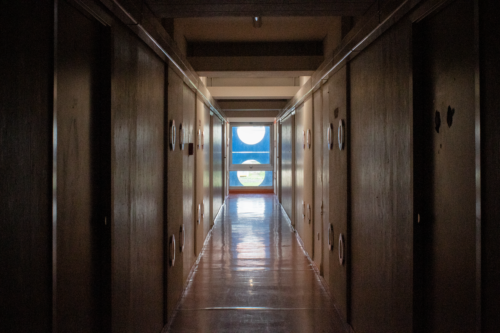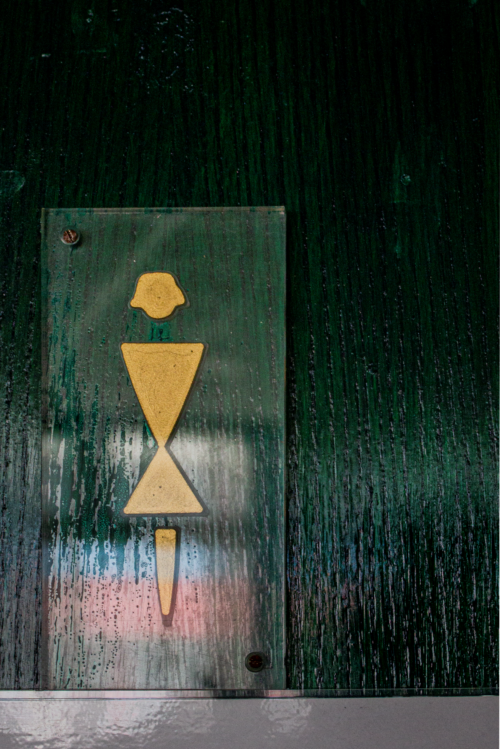Družba University Dormitory and Hotel
Category: Accommodation facilities
Architects: József Finta, I. Roth
Works of art – interior: Peter Günther, Stanislav Harangozó, Miloš Šimurda
Location: Botanická 25, Bratislava – Karlova Ves
Design: 1974–1980
Built in years: 1974–1980
Restoration: 1978–1982
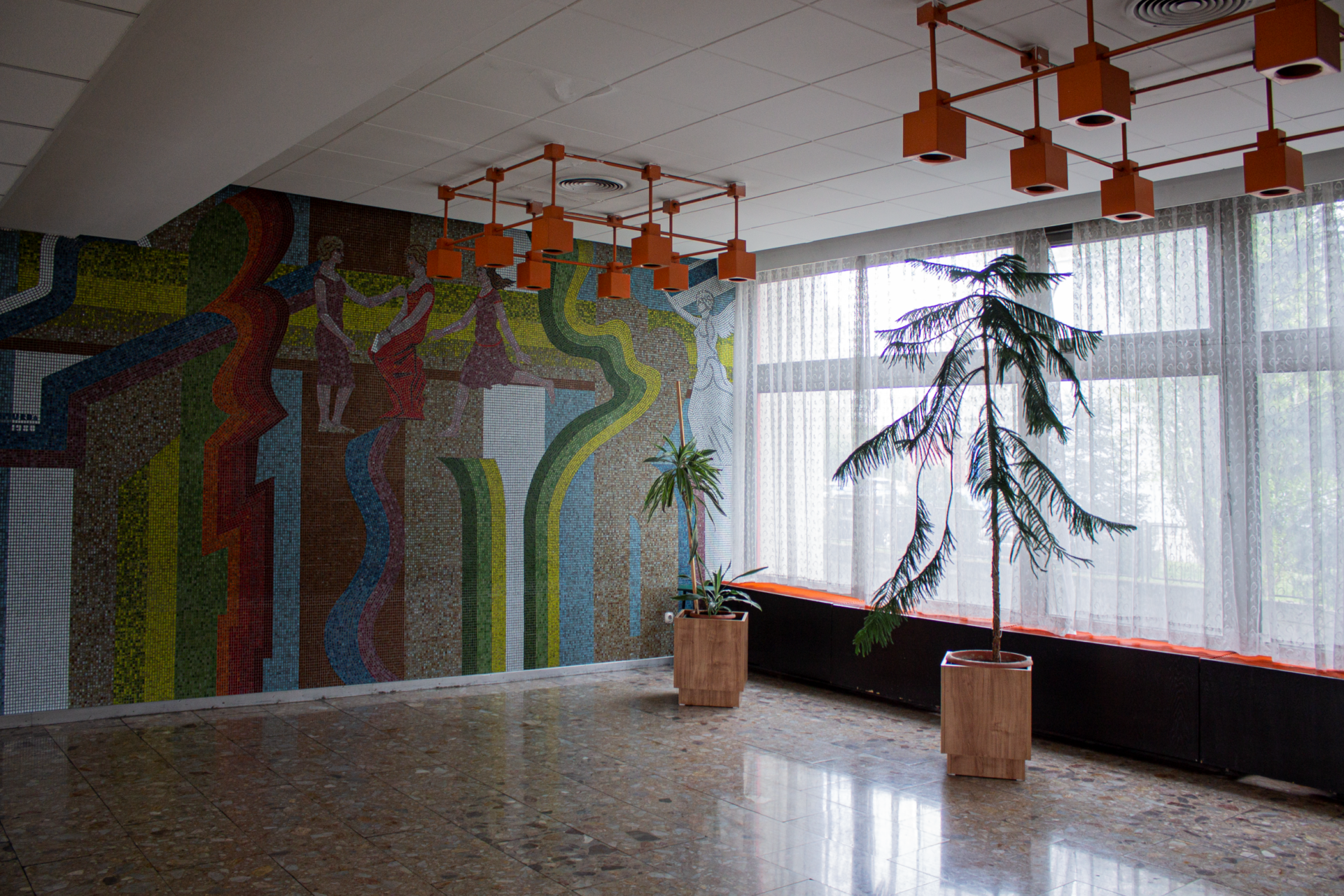
The Družba University Dormitory, currently also serving as a hotel, was built to provide temporary accommodation for the university youth. The building was made using a prefabricated construction system, at that time typical mostly for residential construction. Despite the application of a standardised construction system, the architectural, functional, and aesthetic qualities of this work are indisputable. It is mainly the holistic approach, the logical layout and operational scheme, as well as the expressive unity of the architecture and the interior that lend this building the quality mark.
The building’s composition consists of two ten-storey masses with accommodation sections, between which there is situated a multi-purpose low-storey “base” of the building. It is here that the functionally attractive premises are located, the main representatives of which are the today’s congress centre and small catering units. The main parts of the congress centre are the congress hall offering a 236-seat capacity, three meeting rooms, and a lobby area. The interiors have preserved to this day several period features that Anna Gergelyová summarised with the following words: “In the exterior as well as in the interior, symmetry is very noticeable as one of the basic means of expression of the time. The principle of a symmetrical left-and-right-side mirroring appears for instance in the entrance zones equipped with reception desks. The dominant blue-red colour combination used in the exterior is also often replicated in the interior. However, in some places it is complemented or replaced by a rich orange colour in combination with emerald green. In many cases, the morphology of interior elements draws from basic geometric shapes such as circle, square or rectangle. The original furniture can be seen very rarely. What has been preserved are mainly the interior structural components, such as the wooden panelling present in several parts of the building. The original perforated plaster ceiling once typical for the Družba Dormitory can only be seen in the congress hall today. It is here that most of the interior elements have been preserved almost in their original state. Those are the aforementioned wooden panelling, as well as the light fixtures, railings, and door handles. The original lights complement the atmosphere of several spaces, such as the reception area and the staircase leading up to the congress hall. Some pictograms marking individual parts of the building have also been preserved.” [3]
“The abundance of artwork, present in just about every publicly accessible area, is also remarkable. In the reception area of the accommodation section D1, there is a ceramic mosaic by Miloš Šimurda with socialist realism scenes, the use of which was typical for the period. The walls of the receptions with arcade entrances are decorated with several art protises by Peter Günther. In section D2, there is an abstract mosaic by Miloš Šimurda and a stone mosaic by Stanislav Harangozó. Another stone mosaic by Harangozó can be seen at the dining room entrance. The lobby area near the congress hall entrance is once again dominated by an art protis created by Peter Günther. Considering the purpose of the building itself, themes from the sciences such as mathematics, chemistry, and physics are present in almost all of the artwork.” [2, 3]
“The spirit of socialist realism influenced by the ideology of the time is noticeable in the overall character of the architecture and interior design. On the other hand, the object is aesthetically and technologically advanced and unique. What was beautiful about the period of the building’s construction was the concept of visual integrity of architecture and interior design. Many of the interior elements used are thus thought out down to the last detail and made to measure. The Družba Dormitory has a very strong visual language, thanks to which, despite many necessary repairs and changes, one can still feel the character of the original design. Although the spirit of the original integrity, when even the smallest detail was related to the mass of the building, was lost as a result of a reconstruction, some of the actions can still be seen as positive. It is mainly the preservation of the works of art, as well as the retention of colour combinations, thanks to which the building remains distinctive.” [3]
- Záhorský, Marian – Ohrablo, František – Černík, Peter: Vysokoškolské internáty v bratislavskej Mlynskej Doline. [University dormitories in Bratislava’s Mlynská Valley.] In: Projekt 6/258/82, 1982, pp. 19-23
- Miller, Lenka: Krásna Bratislava. [Beautiful Bratislava.] Website: Denník N. Available at: https://dennikn.sk/blog/2128884/krasna-bratislava/
- Gergelyová, Anna: Vysokoškolský internát/Hotel Družba, Bratislava. [The Družba University Dormitory/Hotel, Bratislava.] Seminar paper for the Public Interior course, Faculty of Architecture and Design STU Bratislava, Summer Term 2022–23
Anna Gergelyová
